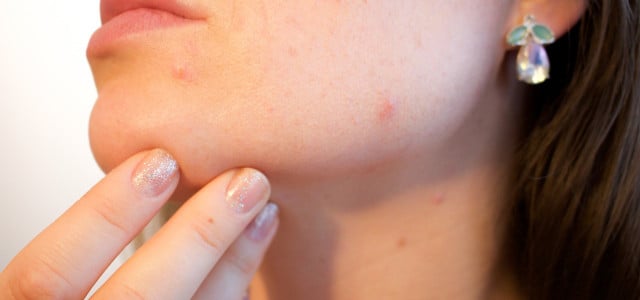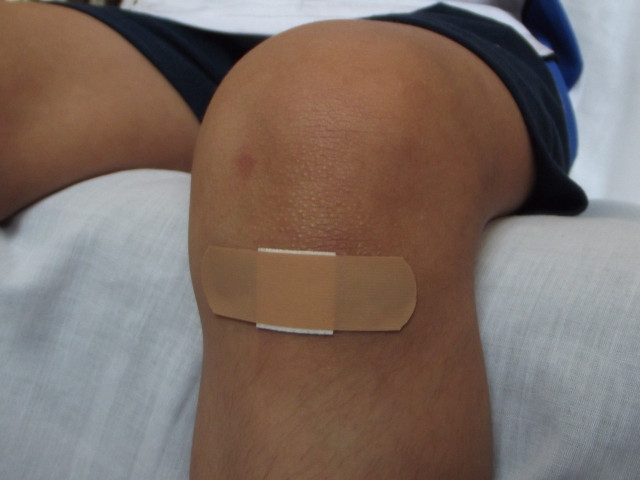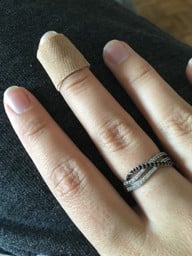
Drawing salve has long been used to treat inflammation, but from today’s perspective it is not entirely harmless. This is also due to its ingredients.
Your great-grandparents may have had a drawing salve in their bathroom cabinet.
The ointment is used for minor inflammations, for example pimples or when a splinter in the skin festers.
But what has long been considered good does not necessarily meet today’s requirements. The drawing salve is based on shale oil, which has a similar fossil history to petroleum:
- The production of the drawing salve consumes the earth’s fossil raw materials.
- Their production consumes thermal energy.
Small inflammations can usually be treated more sustainably with herbal remedies – made from renewable raw materials.
How a drawing salve works on inflammation

(Photo: CC0 / Pixabay / saulhm)
For over 100 years, drawing salve has been used to draw purulent inflammations out of the skin. The success of the treatment is supported by only a few independent studies. The Pharmaceutical Journal also refers to a manufacturer of the salve, who attributes the following effects to it:
- The drawing salve is supposed to increase blood flow around the inflamed area. This can strengthen the body’s own defenses against the invading pathogens. This initially causes more pus to form.
- Since the drawing salve softens the skin and the pus, the pus plug can be removed more easily.
- The drawing salve acts against bacteria and inhibits their further spread in the tissue.
- It supposedly slows down the sebum production of the skin gland.
- The active ingredients in the ointment are intended to relieve some of the pain and soothe the itching that often occurs with inflamed skin.
In most cases, drawing salve contains only one active ingredient with the chemical name ammonium bituminosulfonate, which is what gives it its distinctive black color. Instead, you will often read the brand name of the respective pharmaceutical manufacturer on the packaging, such as Ichthammol, Ichtholan or Ichthyol.
Drawing salve: home remedy for pimples and skin irritations

(Photo: CC0/pixabay/kropekk_pl)
The drawing salve is available in different concentrations. You can usually buy low-dose ointments from the pharmacy without a prescription. Ask them for advice on which type is suitable for your problem.
You can treat small inflammations directly under the skin with ointments that contain up to 20 percent of the active ingredient. These include, for example:
-
underground pimples where no pus head is visible yet,
- small razor bumps,
-
ingrown hairs that have become inflamed,
- Acne and impure skin (Caution: Drawing salve is not intended to be applied to large areas of skin. You should only use it occasionally on very stubborn pimples.)
- as well as small injuries such as splinters.
Drawing ointment for medical treatment
You should not treat inflammations that go beyond the skin irritations mentioned above or are located under the skin yourself. In any case, seek medical treatment. Doctors can also prescribe drawing salves with higher doses.
-
Boils – Netdoktor informs that doctors treat an inflamed hair follicle (boil) with drawing salve, among other things.
-
Joint inflammation – The Pharmaceutical Journal reports that drawing salve is sometimes used for inflammation of the fibrous tissue and joints. The ointment bandage works against the swelling.
-
Inflammation of the nail bed – Netdoktor recommends drawing salve as a remedy that you can use to treat an inflamed nail bed. However, you should also seek medical advice and discuss your treatment with your doctor.
How to use drawing salve

(Photo: CC0 / Pixabay / Couleur)
How to treat superficially inflamed skin areas with drawing salve:
- Always dab the drawing salve directly onto the affected area of skin and leave it on throughout the day.
- Protect the area with a plaster or bandage so that no ointment gets on your clothes. The black drawing ointment leaves stubborn stains.
- Carefully wash off the dry ointment residue with lukewarm water before applying drawing ointment again the next day.
- The pimple should be “ripe” after three to four days at the latest. You can tell because the yellowish pus head becomes larger and lighter. Then it is only covered by a thin layer of skin and you can carefully remove it.
- Disinfect the skin and cover a finger with a reusable tissue. Then push the pus plug out of the skin. You should do this carefully, do not squeeze the pimple and do not use your fingernails.
Tip: The drawing salve is very thick and difficult to spread. It does not absorb into the skin like other ointments, but dries on the skin. A steam bath can also help you get rid of the pimple more quickly when using the drawing salve.
Caution: You should not use the drawing salve for longer than four days without medical advice.
Drawing salve: What you should consider
No drawing salve should be applied to these wounds:
-
Deep and large wounds – According to the Swiss patient information service RefData, you should not treat deep or large wounds yourself with drawing salve. The treatment of such wounds should be left to a doctor, even if the wound is very dirty. There is a risk of blood poisoning.
-
Varicose veins – If you have skin with varicose veins, you should refrain from using drawing salve.
-
Mucous membranes and eyes – Avoid contact with mucous membranes or eyes.
Instructions for use:
You should also not use the drawing salve together with other externally applied medicines. Always follow the instructions for use on the package insert, because drawing salve is not a care cream, but a medical product that is listed in the Yellow List of Medicines, even in low doses.
Allergy: DocCheck points out that some people may have an allergic reaction. If your skin itches under the ointment or small watery blisters form on your skin, you should stop the treatment immediately.
Pregnancy: RefData informs that the studies on use during pregnancy or while breastfeeding are not conclusive. In any case, seek medical advice before using the drawing salve yourself.
How sustainable is drawing salve?
Drawing salve is based on fossil raw materials that are no longer renewable.
- Shale oil is a natural but fossil raw material. Oil shale was formed millions of years ago in the primordial oceans from deposits of single-celled organisms.
- As with fossil fuels, shale oil reserves are limited.
For example, oil shale mining in Austria (Seefeld region) has largely been shut down since the 1980s. An established manufacturer of drawing salve claims to use deposits in France.
According to a manufacturing company, extremely high temperatures are required to extract the shale oil from the stone. The production of shale oil is therefore energy-intensive.
Is treatment with drawing salve still appropriate?

(Photo: CC0/pixabay/GeisserS)
Experts disagree as to whether the drawing salve and its active ingredient ammonium bituminosulfonate are still appropriate today.
The few studies available do not help to adequately clarify the effect or possible side effects of the fossil healing ointment. Some of the studies also refer to observations from many years of practical use and conclude that the formulation of the drawing ointment is well tolerated.
In contrast, the Hamburg Wound Center has the active ingredient black ichthyol on its list of prohibited substances for the treatment of chronic wounds. Doctors consider the mineral oil-containing formulations to be unsuitable for the long-term treatment of wounds.
The other ingredients are also sometimes questionable nowadays. According to the information provided in the package insert by Apotheken Umschau, these include:
-
Vaseline and lanolin – as ointment
-
Butylhydroxytoluene E321 – for preservation
- purified water
Vaseline and E321 are also no longer the first choice ingredients: Butylhydroxytoluene (E321) is not water-soluble. According to a study by the Öko-Institut, it cannot be ruled out that residues find their way into rivers and seas via wastewater. Vaseline is a grease that is also based on mineral oil.
Herbal tinctures or ointments are definitely more sustainable and can be used just as well to treat minor inflammations.
-
Netdoktor recommends using chamomile, arnica, tea tree oil and onion extracts as home remedies to treat an inflammation of the nail bed. They have an anti-inflammatory effect.
- You can treat pimples with a healing pack made of healing clay.
- A marigold tincture also helps with rashes or razor bumps.
Read more on Techzle\.com:
- Make your own face mask: Natural recipes for clear skin
- Cleansing pores: Natural remedies for beautiful skin
- Oily skin: These home remedies help against shine
- Make your own calendula ointment: recipe for your own calendula cream
** marked with ** or orange underlined Links to sources are sometimes affiliate links: If you buy here, you are actively supporting Techzle\.com, because we then receive a small part of the sales proceeds. More information.